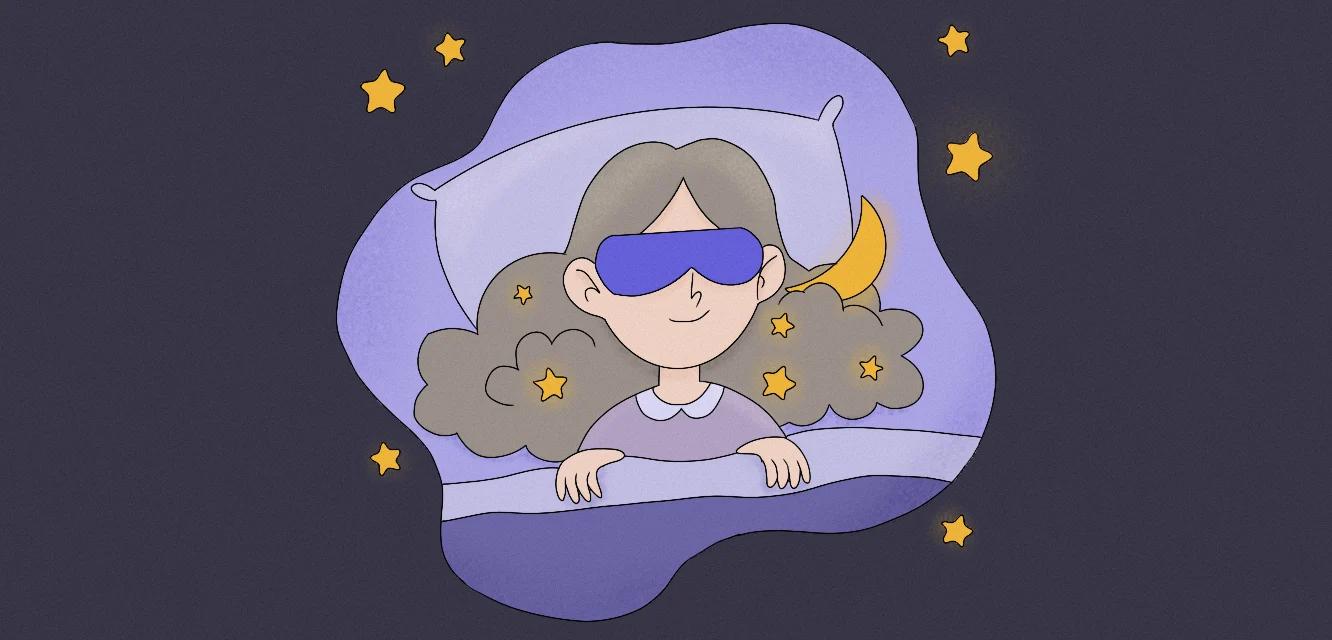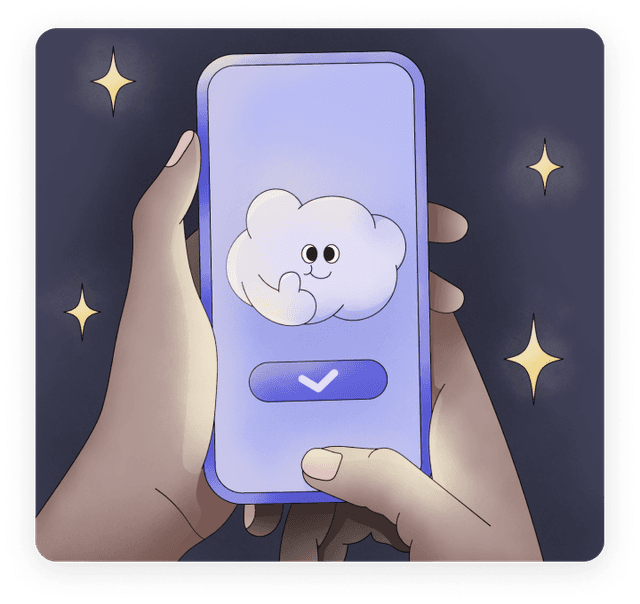
Denys Chumak
15 Sep 2023
4 Theories on Interpretation to Dreams | DreamApp
Carey Morewedge and Michael Norton, who are very committed dreams interpreters, did a big study on the dreams of more than 1,000 people from the United States, India, and South Korea.
They discovered something interesting: many college students in the study didn't think their dreams were just random brain activity. Instead, they believed what Freud (one of the brilliant dreams interpreters) believed - that dreams show us what we secretly want and desire.
But what's even more interesting is that how important people think their dreams are is greatly affected by their own opinions. Dreams with people we don't like are often remembered more, while dreams with friends or loved ones are seen as more important.
Let’s examine four theories of interpretation to dreams by psychologists.
Four Theories to Help you to do a Dream Analyse
Let's explore each of these theories to learn how they help unravel your dreams' mysteries.
1. Sigmund Freud
Dreams as a Route to the Subconscious:
Sigmund Freud wrote a book called "The Interpretation of Dreams" where he said that dreams are connected to fulfilling our wishes.
Dreams are what we wish for:
Freud thought that dreams have two parts: the manifest content, which is what you actually see and experience in the dream, and the latent content, which is the hidden desires or wishes of the dreamer. Simply put, Freud thought that the things you dream about reveal your deepest desires.
He talked about four parts of this process that he called "dream work":
-
Condensation: Dreams have lots of different ideas and concepts in them. Information is made shorter and put into one idea or picture.
-
Moving things around: This part of dreaming makes the hidden feelings in dreams harder to understand by mixing up the important and unimportant parts of the dream.
-
Symbolisation: This operation also hides the hidden ideas in the dream by using objects that represent the hidden meaning of the dream.
-
Freud said that in the last part of dreaming, the strange parts of the dream are rearranged to make it easier to understand. This creates what we call the dream's manifest content.
Also read: Dream Analysis: The Secret Truths Dreams Reveal
2. Carl Jung
Jung's theory of "Archetypes and the Collective Unconscious":
Carl Jung and Freud had some similarities, but Jung believed that dreams were more than just repressed wishes.
Dreams Explore the Underdeveloped Mind:
Jung said dreams show both personal and collective unconscious. He thought dreams make up for parts of the mind that aren't well-developed when we're awake.
Jung's Four Archetypes:
Jung said that archetypes like the anima, the shadow, the animus, and the persona are often shown as symbols or figures in dreams.
He thought that these symbols stand for feelings that the conscious mind hides. Freud and Jung had different ideas about dreams. Freud thought that certain symbols always meant specific hidden thoughts, but Jung believed that dreams are unique to each person. Jung thought that understanding dreams required knowing a lot about the person who had the dream.
Also read: How to Analyze a Dream Using Jungian Dream Analysis
3. Calvin S. Hall
Hall: Dreams and How Our Mind Works:
Calvin S. Hall studied lots of dream diaries from people and found common themes and patterns. He made a system to organise the different things we dream about into categories.
Dreams Have Patterns That Are Relevant to Waking Life:
Hall said that dreams are a way our brain thinks about our personal lives. To understand dreams, according to Hall's theory, you need to know the following things:
What the dreamer does in the dream. The things and shapes in the dream. The way the dreamer and the characters in the dream interact with each other. The place where the dream happened, how it changed, and what happened in the end.
The main aim of interpreting dreams is not to comprehend the dream itself, but to understand the person who had the dream. Hall's research showed that the characteristics people show when they are awake are also the same as the ones they show in their dreams.
4. G. William Domhoff
Domhoff believes that dreams are a way to show what happens in our daily lives.G. William Domhoff is a well-known person who studies dreams. He learned from Calvin Hall at the University of Miami.
Dreams Reflect Daily Life:
Dreams show what people think and worry about when they are awake, according to Domhoff's research on dreams. According to Domhoff, dreams happen because of how our brains work and the way we organise information. He says that dreams come from these thinking processes.
If you want to uncover the hidden meanings in your dreams, it's important to understand these four theories. Just so you know, figuring out what dreams mean isn't a precise science. The meaning of a dream can be different for each person. But if you look into these theories, you can learn important things about your own subconscious mind.
If you ever think about your weird and clear dreams, you can explore these ideas about understanding dreams discovered by interpreters of dreams. Imagine all the interesting things you could learn about your own thoughts and feelings! Dreams aren't just made-up stories; they're like doors that show you what's really going on inside your mind, and you can discover it.
Also read: Beginners Guide To Dream Interpretations & 8 Common Dream
Interpretation to Dreams
Dream interpretation has become more popular since the 1970s. In 1974, Ann Faraday wrote a book called "The Dream Game." It was a very important book because it taught people simple ways to understand their dreams. Anyone who wanted to learn about their dreams could use the techniques and ideas in the book. These days, people can find lots of books that can help them understand their dreams. These books have things like dream dictionaries, symbol guides, and tips to help figure out what their dreams mean.
To Sum Up
Basically, people usually understand their dreams based on what they already think about themselves, the world, and the people in their lives. Dreams may or may not have a deeper meaning, but one thing is for sure: a lot of people find dream interpretation interesting and enjoy doing it.
DreamApp is a website that can help you better understand your dreams. It offers a large collection of dream symbols and what they might imply. So, if you've ever wondered what your dreams are trying to tell you, DreamApp.io can assist you. It's like having a tour guide to help you discover hidden messages in your dreams and learn more about yourself.
FAQs##
What are dreams and why are they difficult to understand?
Dreams can be weird, exciting, or scary, but understanding what they mean is usually confusing. Their purpose is yet unknown, which makes interpreting dreams more difficult.
Are there any ideas that explain why dreams are important?
Yes, there are many theories that try to explain what dreams mean, but none of them are certain. Dreams interpreters made four important theories about understanding dreams.
How did Sigmund Freud understand dreams?
Freud thought dreams hid our deepest wants. He said that dreams are made up of two parts: manifest content (what we see) and latent content (hidden desires).
What did Carl Jung think about dreams?
Jung studied dreams to understand the collective unconscious, which is a place where universal symbols and archetypes are found. These symbols show hidden thoughts and feelings that are different for each person.
Did you have an unusual dream with this symbol?
Let's analyze this dream with our expert!
At least five words, please.

Your dreams are completely private
Take control of your dream emotions in the free mobile app



The most recent users' dreams
Go to the user dreams page
Dream App
Free dream interpretations

(1,213)











